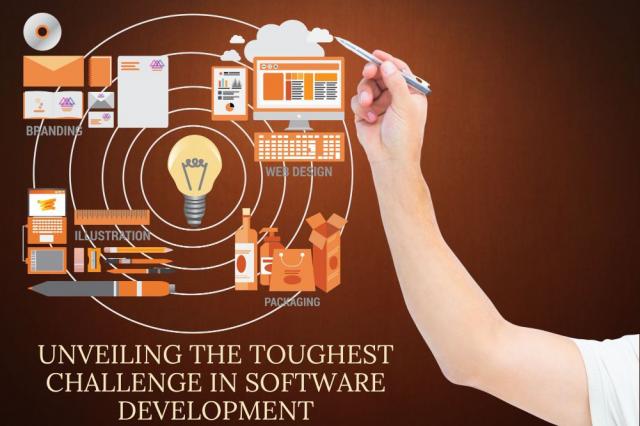In the dynamic realm of technology, Software Development stands as the backbone, propelling innovation and driving progress across industries. Yet, amid the fervor of crafting intricate code and architecting digital solutions, lies a formidable adversary – the pervasive challenge that haunts developers and engineers alike. This challenge transcends the boundaries of programming languages, methodologies, and frameworks, casting a shadow over projects big and small. So, what precisely is the biggest challenge in software development, and how does it shape the landscape of digital innovation?
Related Articles
At its core, the most formidable hurdle in software development is the ever-elusive pursuit of maintaining balance amidst complexity. The modern software ecosystem is a labyrinth of intricacies, teeming with interdependencies, evolving requirements, and unforeseen pitfalls. With each line of code added, the complexity of the system grows exponentially, akin to a sprawling web where every strand has implications far beyond its immediate vicinity.
Technical Debt
One of the primary manifestations of this challenge is the perennial battle against technical debt. Technical debt accumulates when expedient solutions are favored over robust, long-term strategies to meet deadlines or address pressing issues. While these shortcuts may offer temporary relief, they sow the seeds of future complications, entangling developers in a web of tangled dependencies and arcane workarounds. As projects mature, technical debt accrues interest, bogging down development velocity and stifling innovation.
Communication Breakdown
Moreover, software development isn’t merely a technical endeavor; it’s a collaborative effort involving diverse stakeholders with competing priorities and perspectives. Bridging the gap between developers, product managers, designers, and end-users requires effective communication and alignment of objectives. Miscommunication or discord among team members can lead to divergent interpretations of requirements, resulting in rework, delays, and ultimately, dissatisfaction among stakeholders.
Technological Turmoil
Another facet of the challenge lies in the relentless pace of technological advancement. As new frameworks emerge, programming paradigms evolve, and best practices shift, developers must continuously adapt to stay relevant. However, keeping pace with the blistering rate of change while simultaneously delivering high-quality, maintainable code is akin to a high-wire act without a safety net. Failure to embrace emerging technologies risks stagnation, while hasty adoption can introduce unforeseen risks and compatibility issues.
Global Complexity
Furthermore, the global nature of software development introduces additional layers of complexity. Distributed teams spanning multiple time zones and cultural backgrounds must navigate communication barriers and coordination challenges. While remote work offers flexibility and access to global talent pools, it also exacerbates issues related to collaboration, knowledge sharing, and team cohesion.
Methodologies and Tools
In the pursuit of addressing these challenges, the software development community has embraced a myriad of methodologies and tools aimed at improving efficiency and collaboration. Agile methodologies, such as Scrum and Kanban, promote iterative development and adaptive planning, fostering transparency and responsiveness to change. DevOps practices advocate for the integration of development and operations, streamlining the deployment pipeline and promoting a culture of automation and continuous improvement.
Additionally, the rise of low-code and no-code platforms promises to democratize software development, empowering citizen developers and domain experts to participate in the creation of digital solutions without extensive coding knowledge. These platforms abstract away technical complexities, enabling rapid prototyping and experimentation while reducing the burden on traditional development teams.
The biggest challenge in software development lies in navigating the labyrinthine landscape of complexity while balancing competing priorities and stakeholder expectations. From grappling with technical debt to fostering effective collaboration in distributed teams, the journey of a software developer is fraught with obstacles at every turn. Yet, it is through perseverance, innovation, and a relentless commitment to learning and improvement that developers continue to push the boundaries of what’s possible in the ever-evolving world of technology.
References:
- McConnell, S. (1996). “Rapid Development: Taming Wild Software Schedules.” Microsoft Press.
- Agile Manifesto. (n.d.). Retrieved from https://agilemanifesto.org/
- Humble, J., & Farley, D. (2010). “Continuous Delivery: Reliable Software Releases through Build, Test, and Deployment Automation.” Addison-Wesley Signature Series.
- Ford, N. (2019). “The rise of the citizen developer: How low-code development is transforming business”. Forbes.
Image by creativeart on Freepik
The post Unveiling The Toughest Challenge In Software Development appeared first on TULIeServices.
This post first appeared on Why Should You Optimize Voice Search For A Futuristic SEO Practice?, please read the originial post: here

